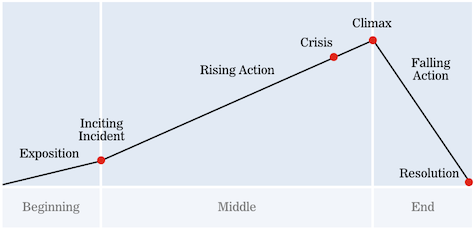Back to buyer-seller basics
In my first sales role, my manager and CEO sent me to a formal training that helped me understand buyers better. I learned early that prospective customers were far more informed and savvy than I initially believed.
I studied tons. Role plays, email revisions, and cold calls challenged me to think on my feet. I devoured details of closed lost deals and successful projects. I began to develop an understanding of complex business objectives and technology requirements.
The more I learned, the more challenging sales seemed and then, consequently, the more attractive it became to me. I was hooked. I began to develop and shape my own sales philosophy based on my learnings:
- SaaS buying has been and is changing. Buyers have access to more options, more information, and more power. Customers are often more than 57% of the way through the purchase process when they engage a salesperson.
- Successful sales teams and salespeople recognize and adjust their approach to this changing power dynamic.
- Salespeople operate at their best when they become a trusted advisor with a clear and shared vision.
A successful sales culture makes it easy for individuals to articulate value at every possible customer touchpoint. I’ll give you a peek into what that looks like here at ChartMogul.
Sales culture at ChartMogul
Most sales roles — and sales at ChartMogul is no exception — require independent action under pressure. Each person is responsible for their own success and development. Salespeople must go beyond compliance, beyond a sales playbook. Each salesperson’s independent action must be rooted in value.
This winter, when prospective AE candidates asked me, “what does it mean to sell at ChartMogul?,” I knew that I needed a concise, shared philosophy that each person could use to evaluate and improve their behavior. Our sales compass is an extension of our company values.
At a high level, our sales team knows that we sell with these principles top of mind:
- Timely — Time is money and time kills deals, right? So we are responsive and thoughtful about how time impacts the customer experience and our ability to meet our sales goals.
- Credible — We are credible when it comes to relevant industries and technologies. When we don’t know something, we’re not afraid to say so, but we then go and out and learn what’s needed to be the smartest and the crispest of communicators.
- Invaluable — We strive to create value in every interaction and for a customer’s overall business.
- Aligned — We are aligned with the customer and aligned with one another. We make people want to do business with us.
We can break down a prospecting email or a closed lost deal to see if we’re being true to our sales identity. I can also make changes to processes and structures to make it easier for our team to do the right thing.
Articulating value in practice
Now that we’ve tackled the high-level bits, let’s get into the detail. Here I’ll explain two examples of how successful salespeople at ChartMogul articulate value. One example will focus on storytelling and one will focus on value creation.
Storytelling
One easy way to get your team to lead with value is to help them understand what constitutes a true customer success story. You can choose a lighthouse or strategic account that you know intimately or a recently closed won deal that’s fresh in your head.
Distill everything you know about the account and opportunity into a story: a before, a turning point (when they opted to do business with you), and a happily-ever-after. Don’t forget the characters — try to position the customer as the protagonist, a champion of software.

If you are in person, I’d suggest whiteboarding this out, but remote technologies like XMind or LucidChart work well, too. Each person on your team should be able to explain how your product or service can create value for that customer with a simple, engaging plot.
Storytelling is an effective way to engage customers, provide social proof, and get customers thinking about the long term. For more ideas on master storytelling, check out these tips from Salesforce.
Value creation
Help your team understand customer and economic drivers. Give them the tools they need to quantify money saved, money made, or risk mitigated.
If you’re intimidated by the idea of quantifying value, you can start with simple behavior change in forecast reviews or sales team meetings. For each one of your active deals, ask your sales team these questions:
- How does the company make money? (hint: if you don’t know, you don’t have a deal)
- What business objective or need does your solution help with?
- How will your solution impact or drive change for the business?
If your sales rep is unclear on the customer’s business priorities, he or she will likely be unable move the deal forward with the necessary credibility to create a long-term customer relationship. Some of this can be coached, but in building your team, recruit for business acumen.
Sales success is built on the back of consistent, well-executed process month over month. But underneath that execution layer, your team should have a unified understanding of how and why you sell — and that can be a bit different for every organization. My advice: don’t overlook the importance of defining, communicating, and improving your sales culture.
